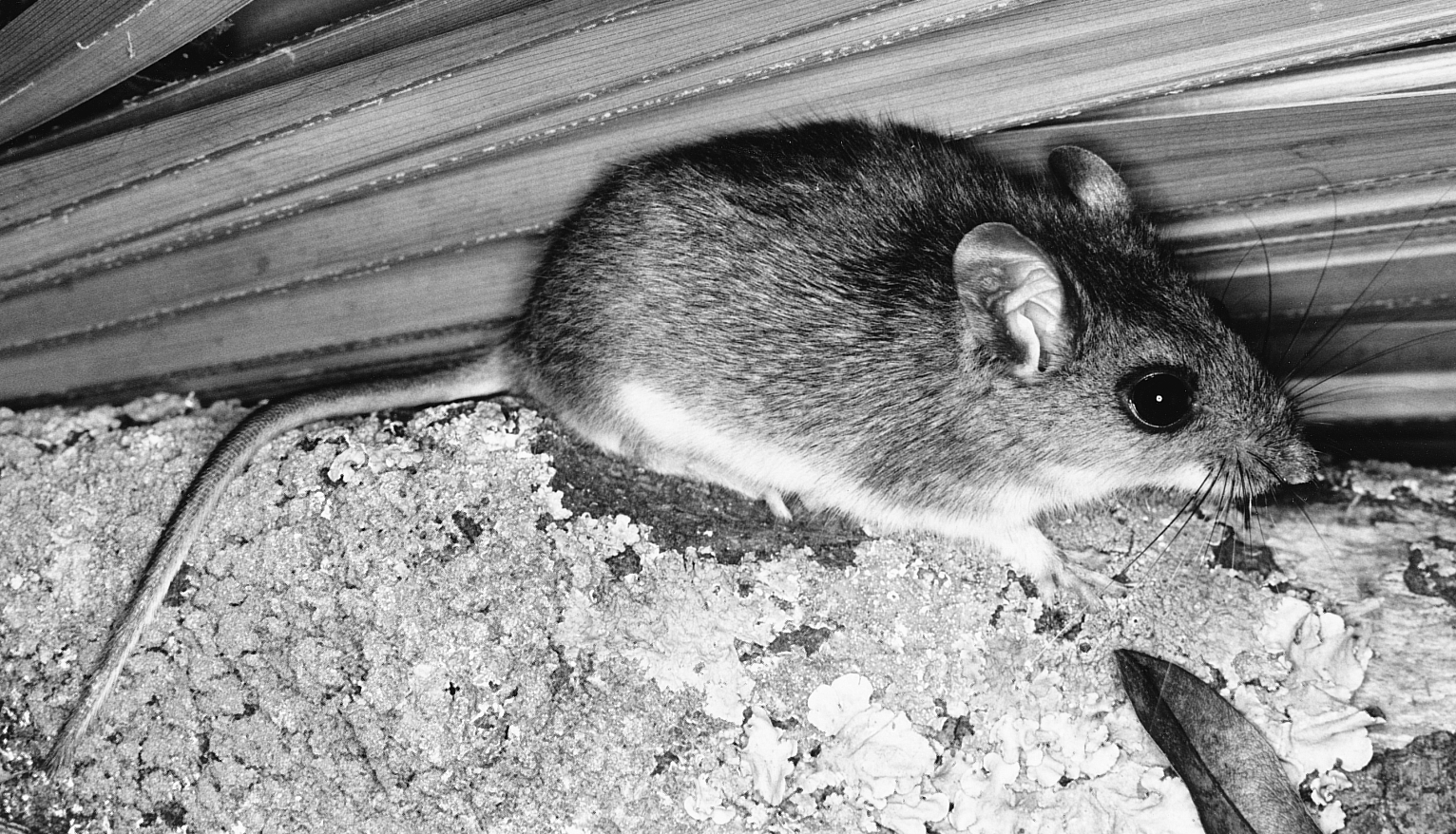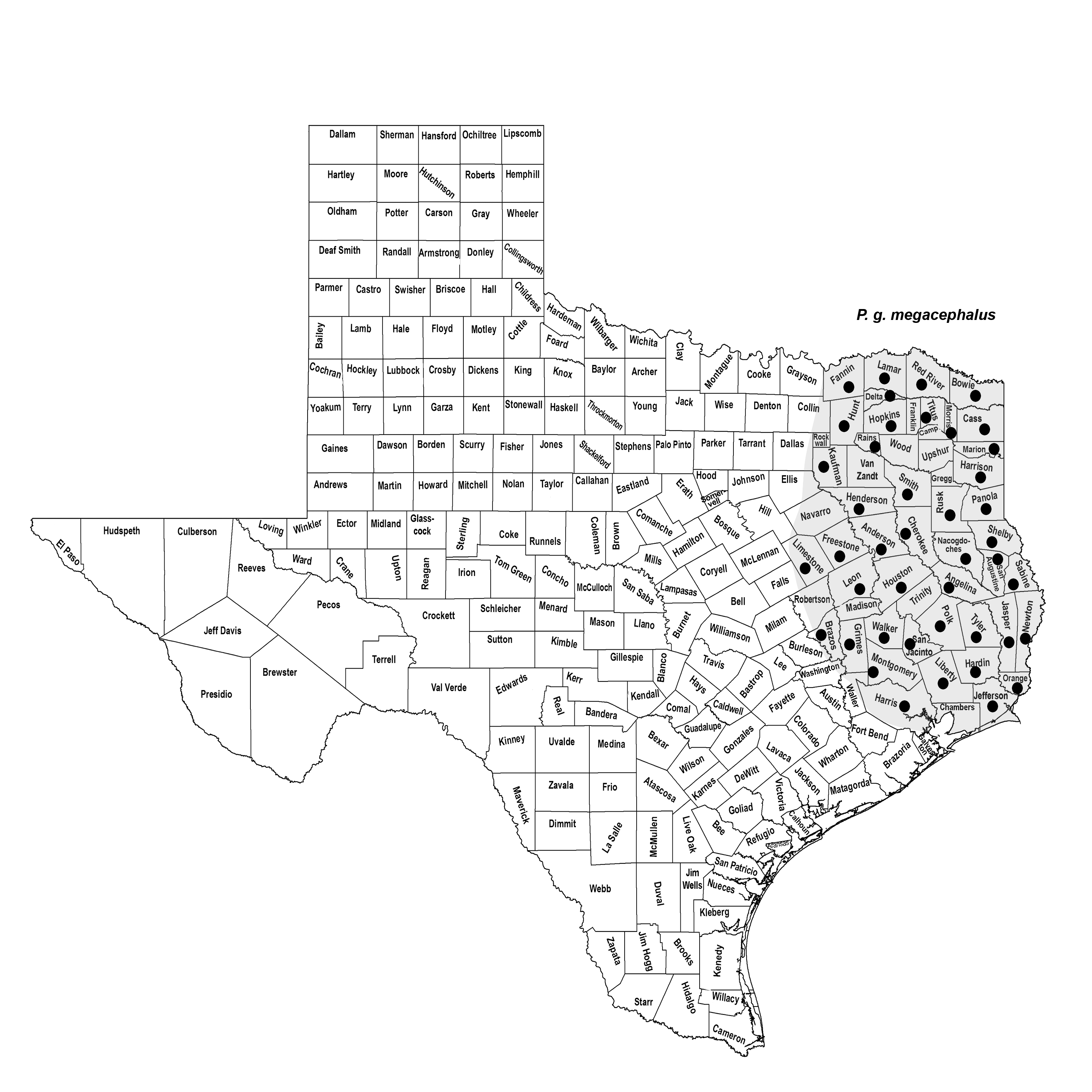COTTON DEERMOUSE
Peromyscus gossypinus (Le Conte 1853)
Order Rodentia : Family Cricetidae
DESCRIPTION. A medium-sized, heavy bodied deermouse; tail much shorter than head and body, between three and four times the length of hind foot and not sharply bicolor, but darker above than below; ears small (16–18 mm from notch); upperparts mummy brown, the middorsal area suffused with black; sides bright russet; underparts creamy white; feet white, but tarsal joint of heel dark like leg. Dental formula: I 1/1, C 0/0, Pm 0/0, M 3/3 × 2 = 16. Averages for external measurements: total length, 180 mm; tail, 78 mm; hind foot, 23 mm. Weight, 34–51 g.
This mouse is most easily confused with the white-footed deermouse (P. leucopus), from which it can be distinguished by larger size (weight usually >30 g in adults as opposed to 15–25 g in leucopus), longer skull (>27 mm in gossypinus and <27 in leucopus), and larger hind foot (>23 mm in gossypinus and <23 in leucopus).

DISTRIBUTION. Found in woodlands in eastern one-fourth of state.

SUBSPECIES. Peromyscus g. megacephalus.
HABITS. Cotton deermice typically are woodland dwellers and occur along watercourses where stumps, down logs, and tangles of brush and vines offer suitable retreats; frequently they occur in woodland areas bordering open fields. They have been trapped in eastern Texas in canebrakes, under logs, and around and in old tumbledown buildings in wooded areas. That they are adept at climbing and may live off the ground in hollows in trees is indicated by the capture of individuals in live traps set on platforms in trees.
Their other habits are not well known. Nothing specific is known of their natural foods, although cotton deermice are omnivorous. Over 50% of their diet may be made up of animal matter, and food availability probably determines the dietary composition. Captive mice seemed to relish rolled oats, wheat, corn, and bread. Green foods were eaten sparingly.
Breeding may occur throughout the year, although there is a decline in reproductive activity during the summer months. In Texas, most breeding commences in late August, reaches a peak in November–January, and subsides by early May. The gestation period is about 23 days in nonnursing females and about 30 days in females that are nursing a previous litter. Adult females may produce four or more litters a year. The litter size ranges from one to seven and averages three or four. The pups are naked and blind at birth. Their ears open in 5 or 6 days, at which age their incisor teeth erupt. Their eyes open in about 13 days, and shortly after that they begin to eat solid foods. They are completely weaned at an age of 20–25 days. They become sexually mature at about 60–70 days of age.
The name cotton deermouse was applied to the species by Le Conte, who found that the mice often used cotton for nest construction. Ordinarily, however, they do little or no damage to cotton or foodstuffs.
POPULATION STATUS. Common. The cotton deermouse is one of the most common rodents in the woods of the Big Thicket in southeast Texas.
CONSERVATION STATUS. The IUCN lists the cotton deermouse as a species of least concern, and it does not appear on the federal or state lists of concerned species. Potential future threats would be excessive logging and conversion to pine plantation habitat, drainage of bottomland wetlands, and habitat fragmentation.
From The Mammals of Texas, Seventh Edition by David J. Schmidly and Robert D. Bradley, copyright © 1994, 2004, 2016. Courtesy of the University of Texas Press.
Natural Science Research Laboratory
-
Address
Museum of Texas Tech University, 3301 4th street, Lubbock, TX 79409 -
Phone
806.742.2486 -
Email
nsrl.museum@ttu.edu

